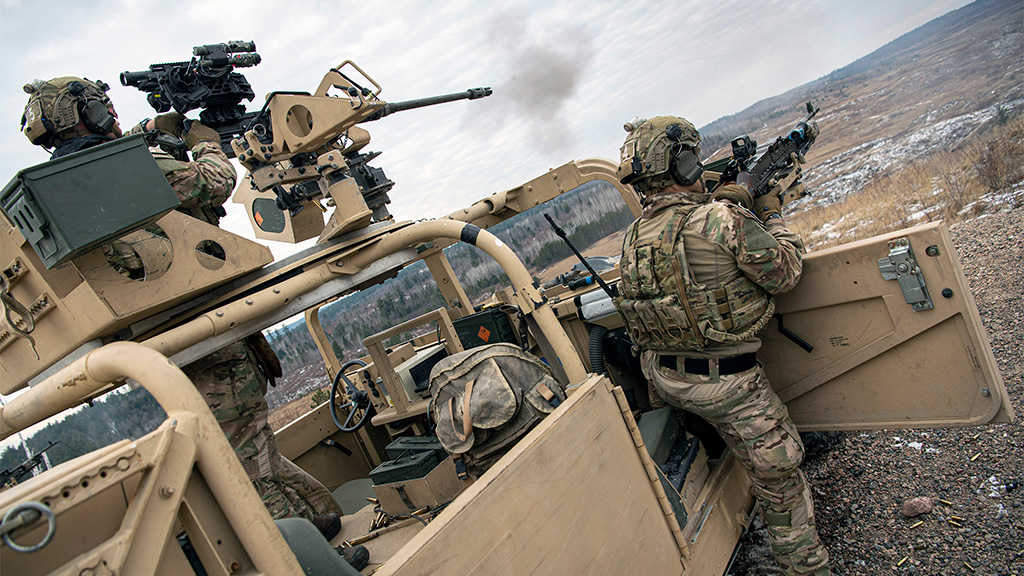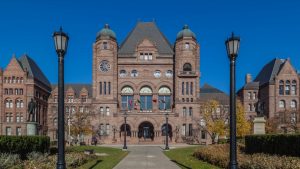A small army of construction workers is now descending on the Dwyer Hill Training Centre southwest of Ottawa to begin preparations for a large-scale, $1.4-billion infrastructure upgrade over the next 10 years.
The base is home to Joint Task Force 2 (JTF-2), an extremely high-readiness and precise special operations forces unit of the Canadian Armed Forces that protects the country from security threats.
Aging infrastructure and utilities at the base will be replaced and upgraded and new structures are slated to be built over the next decade that will be net-zero-ready and meet stringent green targets.
“The global security environment has changed considerably over the last decade and expanded the unit’s long-term training and operational needs,” says Department of National Defence (DND) spokesperson Andrew McKelvey. “New purpose-built facilities will ensure JTF-2’s long-term growth, training and high-readiness operational needs are met.
“The unit’s current facilities are a mixture of temporary and aging buildings that no longer meet its future training needs. While we have made minor capital upgrades to existing facilities at the site, there have been no major capital infrastructure investments since DND acquired the property in 1993.”
The blueprint calls for 89 aging and temporary structures to be replaced with 23 new facilities that have a combined total of more than 98,000 square metres and renovation of seven existing buildings of more than 7,200 square metres. Most of the building demolition work will occur between 2027 and 2032, while the construction of major buildings will be completed between 2026 and 2033.
Fence installation and tree removal has been completed at the site. Earth moving and the installation of underground utilities and services such as electrical and water and wastewater lines will begin at the end of May. Foundations for new buildings and concrete work will start in 2024.
About 2,000 jobs will be created throughout the project, with as many as 250 to 300 people working onsite during peak periods. Construction will be divided into more than 150 subcontracts.
The new buildings will include modern office, operations and technical shop spaces, as well as a new range, training, warehouse, medical, accommodations, access control, kitchen, mess, ammunition, equipment and vehicle storage facilities.
The Dwyer Hill base, a former horse farm, was originally built for the RCMP’s counter-terrorism unit and was taken over by the DND in 1993.
EllisDon is overseeing the project.
Interestingly, the renovated and newly constructed facilities will be designed to meet Two Green Globes energy and environmental design standards.
“Buildings will include 100-per-cent electric mechanical systems to minimize greenhouse gas emissions, low-flow plumbing fixtures, and smart building controls to monitor operations in real-time and optimize building performance,” McKelvey said.
During construction, the project will adhere to the new federal government policy for reducing carbon in construction materials, like concrete and steel, wherever feasible.
“Combined, these features will contribute to reducing greenhouse gas emissions from DND buildings to meet the federal target of net-zero emissions by 2050,” said McKelvey. “Structures will also be designed to withstand the expected future impacts of climate change.”
For example, buildings will be built to withstand higher flood levels from major storms. HEPA systems will be used to filter out smoke from forest fires, and fire-resistant landscaping will be deployed to reduce the impacts of forest fires.
Major upgrades are planned to improve and expand existing site services on the property, including water, electrical, sewage, communications-distribution systems, back-up power, security fencing, roads and pavement.
The DND will also switch oil and fuel heating at the base to electricity by 2027 and upgrade hydro service on the north side of the site. A separate service to supply infrastructure on the south side of the campus will be installed.
Central utilities, including water and sewage treatment, water storage, a backup electrical generation facility and associated distributions systems will also be installed. More than 30 wells and 30 septic systems will be decommissioned, and sprinklers will be installed in all new buildings.
The DND plans to provide opportunities for local contractors to bid on the work and hire Indigenous people.
“The hiring of local contractors provides greater opportunities for local and smaller contractors to bid on work, helps create jobs, and accelerates construction,” said McKelvey. “This is done through a construction management company that will be hired to tender out smaller trade-specific subcontracts.”
Five per cent of the total value of all contracts are targeted for award to businesses managed and led by First Nations, Inuit and Métis people.
“We are also tendering projects using procurement vehicles like the Procurement Strategy for Indigenous Business, and including Indigenous components in contracts,” said McKelvey. “These measures will help ensure that Indigenous-owned and led businesses are partners in federal government contracting.”
JTF-2 will continue its training and operations activities at the base while the construction work takes place.











Recent Comments
comments for this post are closed